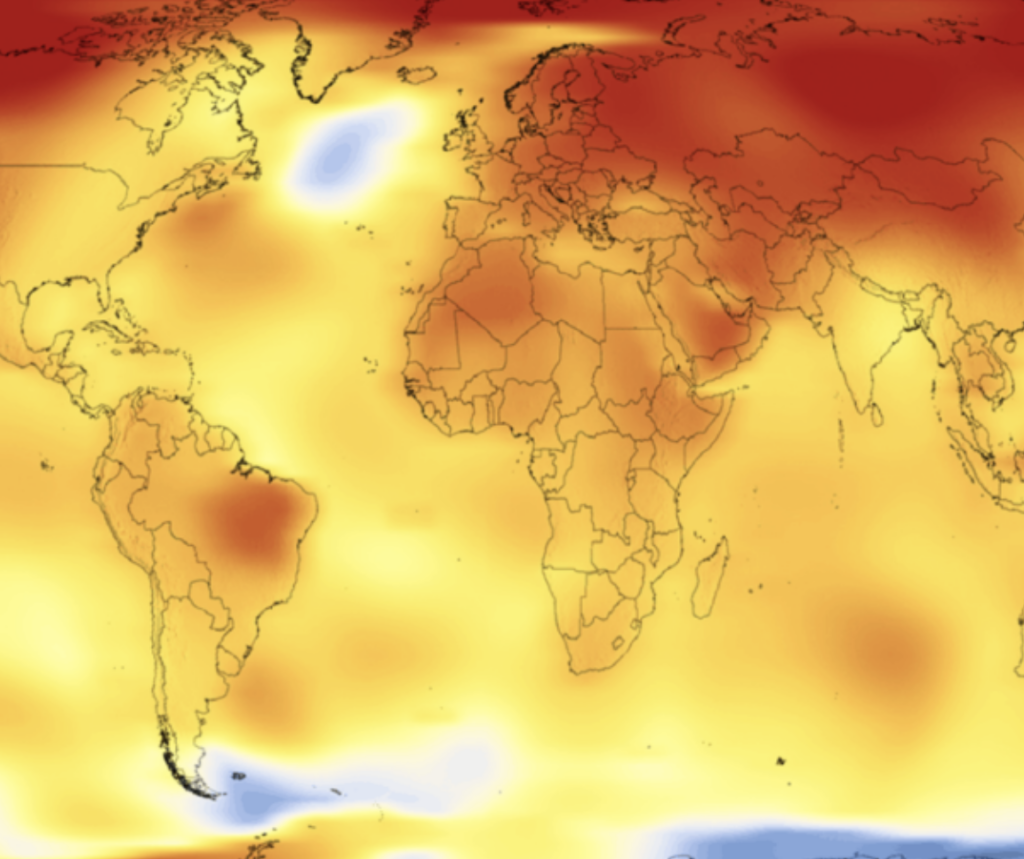The world has breached a temperature threshold, which has caused concern among scientists. One of The Paris Agreement’s aims, set in 2015 and still very relevant now, was to keep global warming well below 2 °C above pre-industrial levels and to pursue efforts to limit the temperature increase to 1.5 °C above pre-industrial levels.
However, this 1.5c limit increase has already been breached for a number of days this year. Around 33% of days in 2023 saw the average global temperature being at least 1.5C higher than pre-industrial levels. It is widely considered that keeping below this 1.5c threshold is critical to ward off the worst effects of climate change.
2023 is on track to be the hottest on record, with 2024 potentially being even hotter.
Ocean Temperatures:
The ocean temperatures around the world have been increasing, which releases heat into the atmosphere. This is one of the many reasons behind these spikes in global temperatures. While greenhouse gases are mainly considered responsible for global warming – it’s not fully known yet what is fueling these increases in sea temperatures.

COP28 – Dubai:
COP28 will take place in Dubai this year, and these temperature increases recorded should be a wake-up call for nations around the world. Last year, COP27 was held in Egypt in November 2022, where Alok Sharma (President for COP26 from 2021 to 2022) was quoted as saying COP27 could be the one where we lose 1.5C, meaning the world is probably not going to keep global warming temperatures to a maximum of 1.5C. “We’ll either leave Egypt having kept 1.5C alive, or this will be the Cop where we lose 1.5C,” he mentioned.
Serious discussions need to take place at COP28 to make sure world leaders keep focus on what climate scientists are warning us about.
The world is now warmer than at any time in the past 125,000 years. It’s not all doom, however.
A recent UN Climate Report argues that exceeding the 1.5C global temperature increase will not be the end of the world as this may only be a “temporary overshoot”. The authors of this report do offer optimism that if rapid and lasting changes, such as massive falls in the price of solar and wind energy and switching to low-carbon transport, can produce significant cuts in carbon emissions in many sectors around the world.
While keeping to 1.5C is expected to safeguard some level of liveability around the planet, it will vary dramatically from area to area. Low-lying Pacific settlements, sub-Saharan Africa and the Indian subcontinent, are already experiencing devastating impacts.
What are we doing?
As a business which produces heating appliances, we are very aware of and committed to lowering the carbon footprint associated with heating a home. All our wood-burning stoves, which, if used correctly, are virtually carbon neutral. We are also developing gas fires which can run on hydrogen – an energy source which is already being blended into the gas grid network through various trails. If the gas network across the UK switched to 20% blended hydrogen, it would be equal to taking 2.5 million cars off the road. It’s these sorts of things we need to focus on to help reduce the threat of climate change.








